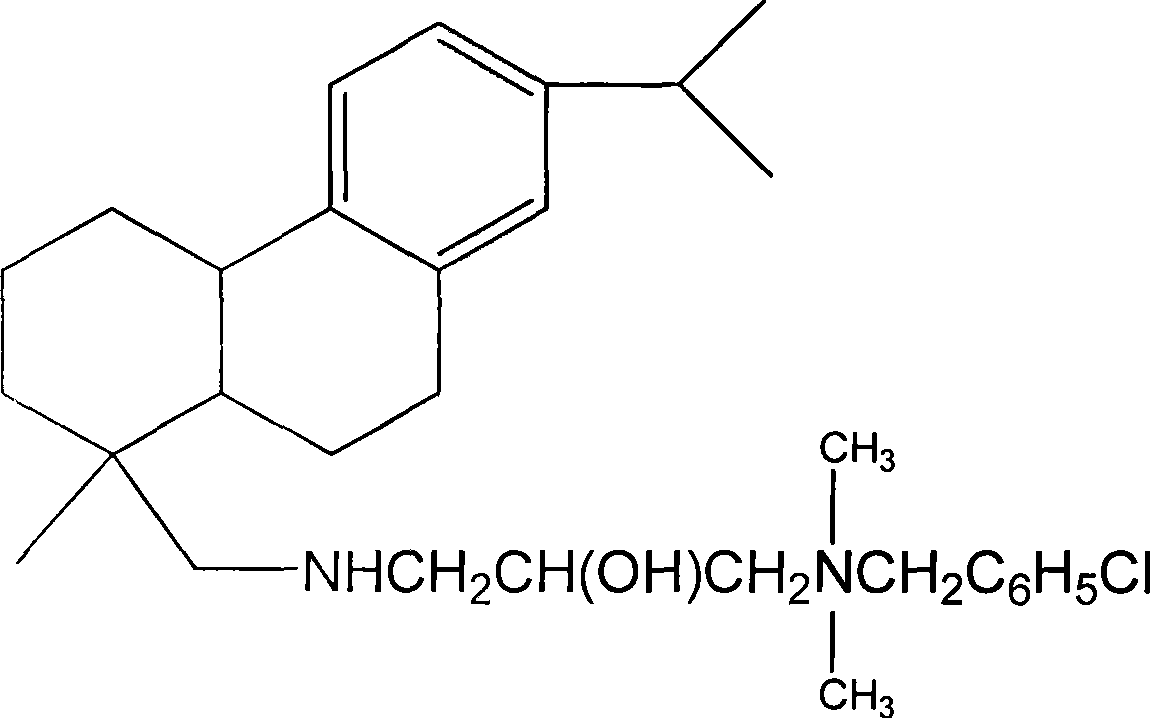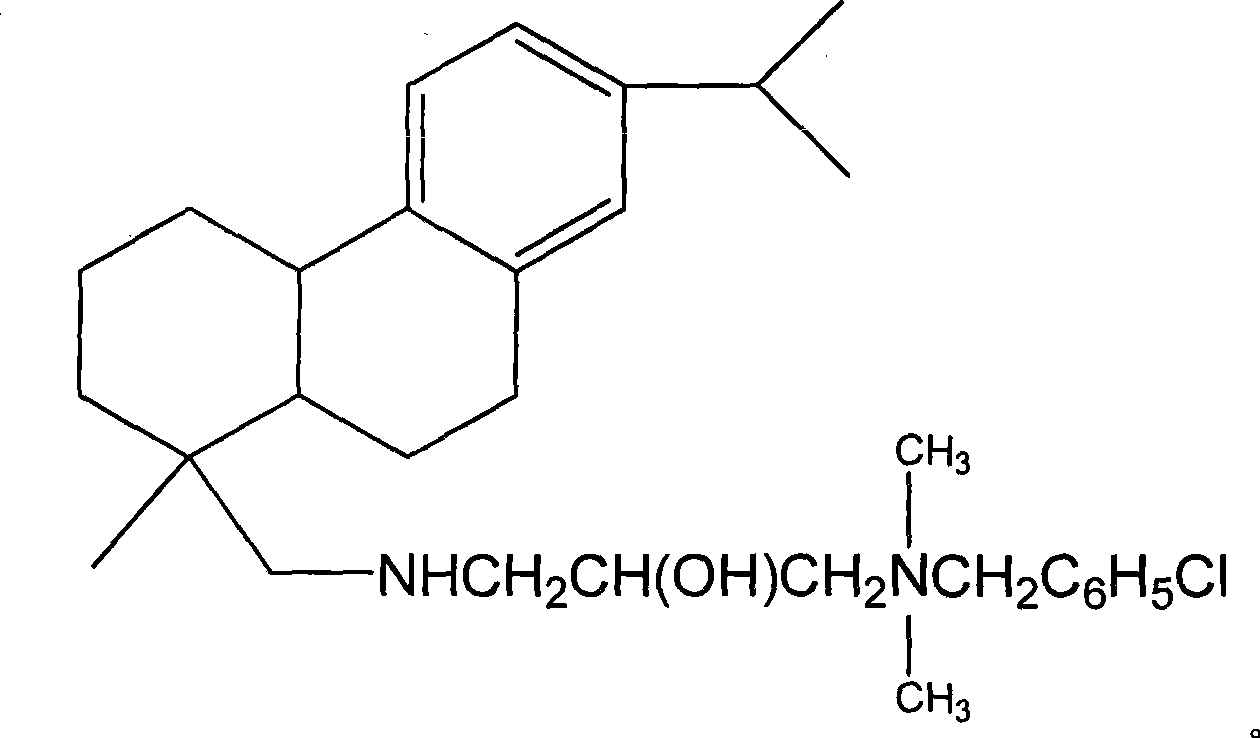Method for preparing 3-dehydroabietylamine-2-hydroxypropyl dimethyl benzyl ammonium chloride
A technology of hydroxypropyl dimethyl benzyl ammonium chloride and epoxypropyl dimethyl benzyl ammonium chloride is applied in the field of preparing cationic surfactants containing dehydroabietyl amine structure, and can solve the problem of water solubility of products Not very good, complex process, low conversion rate of dehydroabietine, etc.
- Summary
- Abstract
- Description
- Claims
- Application Information
AI Technical Summary
Problems solved by technology
Method used
Image
Examples
Embodiment 1
[0017] 100 grams of dehydroabietylamine is made of 400 grams of 1,2-dichloroethane, dichloromethane, ethyl acetate, chloroform, N, N-dimethylformamide, and acetonitrile in a mass ratio of 2:8:3: The composite solvent composed of 5:10:2 was dissolved to form a uniform solution, and then 100 grams of glycidyl dimethyl benzyl ammonium chloride and 3-chloro-2-hydroxypropyl dimethyl benzyl ammonium chloride were added A quaternizing agent with a mass ratio of 10:13 was stirred to form a mixed material; 50 grams of a solid catalyst loaded with an acid-binding agent was added to the mixed material, wherein the carrier of the solid catalyst was made of 100 mesh alumina, 300 mesh silica gel, 150 mesh The target activated carbon is composed of a mass ratio of 1:2:3, and the acid-binding agent contained in the solid catalyst is composed of sodium carbonate, potassium carbonate, calcium carbonate, sodium bicarbonate, potassium bicarbonate, potassium hydroxide, sodium hydroxide, triethylami...
Embodiment 2
[0019] 100 grams of dehydroabietylamine with 800 grams of 1,2-dichloroethane, dichloromethane, ethyl acetate, chloroform, N, N-dimethylformamide, acetonitrile in a mass ratio of 5:10:7: The composite solvent composed of 5:10:6 was dissolved to form a uniform solution, and then 300 grams of glycidyl dimethyl benzyl ammonium chloride and 3-chloro-2-hydroxypropyl dimethyl benzyl ammonium chloride were added A quaternizing agent with a mass ratio of 1:13 was stirred to form a mixed material; 150 grams of solid catalyst loaded with an acid-binding agent was added to the mixed material, wherein the carrier of the solid catalyst was made of 300 mesh alumina, 300 mesh silica gel, 250 mesh The target activated carbon is composed of a mass ratio of 2:7:9, and the acid-binding agent contained in the solid catalyst is composed of sodium carbonate, potassium carbonate, calcium carbonate, sodium bicarbonate, potassium bicarbonate, potassium hydroxide, sodium hydroxide, triethylamine , tripr...
Embodiment 3
[0021]100 grams of dehydroabietylamine is made of 1200 grams of 1,2-dichloroethane, dichloromethane, ethyl acetate, chloroform, N, N-dimethylformamide, and acetonitrile in a mass ratio of 8:3:9: The composite solvent composed of 5:12:3 was dissolved to form a uniform solution, and then 50 grams of glycidyl dimethyl benzyl ammonium chloride and 3-chloro-2-hydroxypropyl dimethyl benzyl ammonium chloride were added A quaternizing agent with a mass ratio of 15:7 was stirred to form a mixed material; 80 grams of a solid catalyst loaded with an acid-binding agent was added to the mixed material, wherein the carrier of the solid catalyst was made of 500 mesh alumina, 400 mesh silica gel, 400 mesh The target activated carbon is composed of a mass ratio of 10:7:2, and the acid-binding agent contained in the solid catalyst is composed of sodium carbonate, potassium carbonate, calcium carbonate, sodium bicarbonate, potassium bicarbonate, potassium hydroxide, sodium hydroxide, triethylamin...
PUM
 Login to View More
Login to View More Abstract
Description
Claims
Application Information
 Login to View More
Login to View More - R&D Engineer
- R&D Manager
- IP Professional
- Industry Leading Data Capabilities
- Powerful AI technology
- Patent DNA Extraction
Browse by: Latest US Patents, China's latest patents, Technical Efficacy Thesaurus, Application Domain, Technology Topic, Popular Technical Reports.
© 2024 PatSnap. All rights reserved.Legal|Privacy policy|Modern Slavery Act Transparency Statement|Sitemap|About US| Contact US: help@patsnap.com









